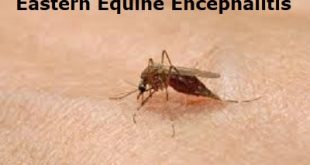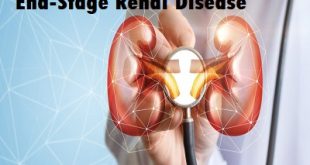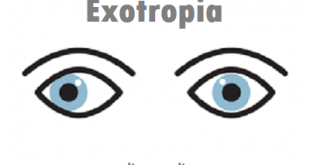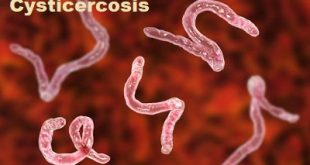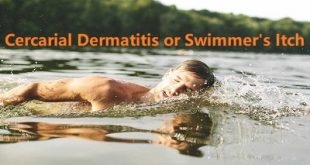What is Ehrlichiosis?
Ehrlichiosis is an illness caused by the bacteria Ehrlichia chaffeensis, E. ewingii or E. muris eauclairensis. You can get ehrlichiosis through the bite of infected ticks, including the lone star tick and the blacklegged tick. Symptoms can start out mild and flu-like, but if not treated quickly, ehrlichiosis can be life-threatening. Ehrlichiosis is sometimes called human monocytic ehrlichiosis (HME).
Ehrlichia are small, gram-negative bacteria, round or ellipsoidal in shape. They preferentially invade mononuclear phagocytes, such as monocytes and macrophages, and in some cases neutrophils. In all of these cell types they occupy cytoplasmic vacuoles, usually in bacterial microcolonies known as morulae. Ehrlichia cycle in nature between ticks and mammals, and can cause disease in many mammalian species.
Pathophysiology
Infection with Ehrlichia species begins with the intracellular uptake of the infectious extracellular form of the organism, the elementary body (EB), or dense core (DC). The elementary body/dense core is then taken up by endocytosis, where the organism replicates and matures to form a reticulate body or reticulate core (RB/RC) and then morula before redifferentiating into an elementary body/dense core that leaves the infected host cell to spread infection. During this process, Ehrlichia utilizes many immune evasion mechanisms, including suppressing apoptosis of host cells, modulation of chemokine and cytokine responses, and down-regulation of host pattern recognition receptors that might enable clearance of the infection. Ehrlichia preferentially infect peripheral blood leukocytes, with E. chaffeensis associated with human monocytic cells, including monocytes and macrophages, and neutrophil infections reported in E. ewingii. Multiorgan involvement can occur, with organisms detected in the spleen, lymph nodes, bone marrow, and peripheral blood. The clinical manifestations of Ehrlichia infections appear to be due to the host inflammatory response to the infection rather than direct damage from the bacteria.
What causes ehrlichiosis?
Three types of Ehrlichia bacteria cause ehrlichiosis: E. chaffeensis, E. ewingii and E. muris eauclairensis. Symptoms of all three are similar, but E. chaffeensis is most likely to cause serious illness. You get infected with Ehrlichia when a tick bites an infected animal and then bites you.
Risk factors for ehrlichiosis include:
- Living near an area with a lot of ticks.
- Owning a pet that may bring a tick home.
- Walking or playing in high grasses.
What are the symptoms of ehrlichiosis?
Symptoms range from mild to life-threatening. They may include:
- Fever and chills
- Severe headache
- Muscle aches
- Nausea, vomiting, and diarrhea
- Cough
- Fatigue
- Joint pain
- Red eyes
- Rash (more common in children than adults)
You may have only some of these symptoms. They may begin within 1 to 2 weeks of getting the tick bite. Some people can be infected and have no symptoms. Older adults and people with other health conditions, such as HIV, are more likely to have severe symptoms.
Possible Complications
Untreated, this infection may lead to:
- Coma
- Death (rare)
- Kidney damage
- Lung damage
- Other organ damage
- Seizure
In rare cases, a tick bite can lead to more than one infection (co-infection). This is because ticks can carry more than one type of organism. Two such co-infections are:
- Lyme disease
- Babesiosis, a parasitic disease similar to malaria
How is ehrlichiosis diagnosed?
Your healthcare provider will ask about your medical history and your symptoms. Tell your healthcare provider if you know you had a recent tick bite. Your healthcare provider may ask about your outdoor exposure in areas of the country where these ticks are common. You’ll also need a physical exam.
Your healthcare provider will need results from certain tests to diagnose the condition. These may include blood tests to check:
- Indirect immunofluorescent assay (IFA). This test will confirm the diagnosis. But it takes about 21 days. A blood sample is taken the first week of symptoms. Then a second sample may be taken 2 to 4 weeks later to confirm.
- Your white blood cells under a microscope. The bacteria may be seen inside the white blood cell.
- Polymerase chain reaction. This test allows the healthcare provider to “multiply” parts of the bacteria, which can then be detected. This test is most sensitive the first week of the illness.
- These may not become positive for 1 to 2 weeks. They are generally not helpful in diagnosing the infection while you are acutely ill.
Ehrlichiosis is often hard to diagnose. You may have only very mild symptoms that could be caused by many other diseases. Some people with ehrlichiosis may not know that a tick bit them. You may be referred to a healthcare provider who specializes in infectious disease for diagnosis.
Treatment
Doctors will commonly prescribe the antibiotic doxycycline to treat ehrlichiosis.
The earlier a person takes this antibiotic, the less likely it is that the condition will have long-lasting effects. A doctor may prescribe antibiotics without having blood test results, to ensure a person who has been bitten by a tick gets prompt treatment.
If symptoms do not improve within 1-3 days after beginning treatment, the person probably does not have ehrlichiosis. However, it is important that the person takes the full course of antibiotics for them to be effective.
In rare instances, such as due to allergies or pregnancy, a person may not be able to take doxycycline. In these situations, a doctor may prescribe a different antibiotic, called rifampin.
If a person has been bitten by a tick but is not experiencing symptoms, doctors do not usually recommend taking doxycycline as a preventive measure. Doing so may delay the onset of the condition, which can make the treatment slower.
Doctors also prescribe doxycycline to treat other diseases that occur due to tick bites, including Rocky Mountain spotted fever and anaplasmosis.
If a person does not receive treatment and their symptoms progress, they can experience complications that include:
- Prolonged fever
- Adult respiratory distress syndrome
- Blood clotting disorders
- Seizures and coma
- Meningitis
If these complications occur, a doctor will treat them in addition to the underlying infection.
Lifestyle and home remedies
If you find a tick on your body, don’t be alarmed. Removing a tick promptly is a good defence against transmission of bacteria. Use the following steps:
- Gloves. Wear medical gloves or similar gloves, if possible, to protect your hands.
- Tweezers. Use fine-tipped tweezers to grab the tick firmly near its head or mouth, and as close to the skin as possible.
- Removal. Pull the tick’s body away your skin steadily and slowly without jerking or twisting it. If parts of the mouth remain, remove them with clean tweezers.
- Disposal. Kill the tick by putting it in alcohol. Do not crush the tick to avoid exposure to possible bacteria. The dead tick can be flushed, lightly wrapped in tape before throwing in the trash or stored in a freezer.
- Storage. A tick can be tested at a later date if you suspect infection. Place the tick in a container, label it with the date, and place it in the freezer.
- Cleanup. Use soap and water to wash your hands after handling the tick and around the tick bite. Clean the site and your hands with rubbing alcohol.
Don’t apply petroleum jelly, fingernail polish, rubbing alcohol or a hot match to the tick.
Can ehrlichiosis be prevented?
Prevention of ehrlichiosis involves taking steps to avoid getting a tick bite.
If people live in an area with lone star ticks, they can help prevent ehrlichiosis by:
- wearing long-sleeved shirts, long pants, and hats when camping or hiking
- wearing light-colored clothing to make ticks easier to spot
- checking clothing and skin for ticks after being outdoors
- tucking pants into socks to make it harder for ticks to reach the skin
- checking pets for ticks after returning from the outdoors
Exposure to fields and wooded areas puts a person at greatest risk for getting a tick bite.
 Diseases Treatments Dictionary This is complete solution to read all diseases treatments Which covers Prevention, Causes, Symptoms, Medical Terms, Drugs, Prescription, Natural Remedies with cures and Treatments. Most of the common diseases were listed in names, split with categories.
Diseases Treatments Dictionary This is complete solution to read all diseases treatments Which covers Prevention, Causes, Symptoms, Medical Terms, Drugs, Prescription, Natural Remedies with cures and Treatments. Most of the common diseases were listed in names, split with categories.

